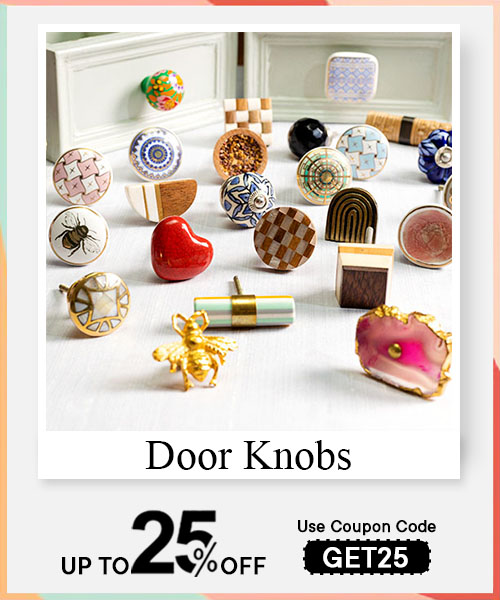A door knocker has always been a part of home decor as well as functionality with a long life. It creates a simple sound while tapped and leaves a compact echo of nostalgia, culture and style afterwards. As historical artifact it tells us about people who lived behind the door and what they hoped to project.
Early bronze rings helped to gather attendants in Roman houses and marked entrances to temples. Later, in cathedral shadows, the sanctuary ring carried legal weight, touch it and a fugitive could claim temporary asylum. Over centuries the door knockers shifted from pure function to deliberate ornament. Lion heads, hands and mythic masks served as identity, protection and status.
Craftsmen transformed metal, weight and design so a single strike could speak across the street. Today the study of door knocker history shows movement from necessity to narrative. It also reveals the door knockers meaning layered into character, personality, depth and heritage. To explore these ideas more fully, you can browse our collection of historically inspired door knockers through the link.
The Sanctuary Ring from Medieval Origins carried a gravity that went far beyond its iron weight. In medieval Europe this single object shaped lives, laws and the very idea of refuge. Sanctuary ring is a crucial part of door knocker history because from roughly 500 to 1400 AD it turned the doors of a church into a legal protection.
Back in the days, Cathedral doors held a special authority. Ecclesiastical law recognised the moment a fugitive touched the ring. That touch placed the seeker under the care of the church. Secular officers were expected to halt immediate arrest. The person could enter sacred space, plead for mercy and negotiate through clerical channels. Protection varied across regions. Some churches granted about forty days. Others allowed protection until a hearing was arranged. The rulebook shifted with politics and power struggles between crown and clergy.
The rings themselves carried a presence. Many surviving examples and documented accounts describe iron rings weighing between ten and fifteen pounds. The heft was deliberate. It signalled protection. Forged by skilled craftsmen, the rings were mounted onto broad plates hammered deep into thick timber. Weather carved its own marks. Repeated grips left shine across the metal. The surface became a record of countless stories, each hand its own footnote in the larger door knocker meaning.
Among the iconic examples, Durham Cathedral stands first in history. Its sanctuary ring, with its human mask and heavy loop, became a symbol of public life in the North of England. Canterburys doors carried their own episodes of flight, confession and political theatre. These sites turned the sanctuary ring into an emblem of authority and compassion woven through medieval society.
Physical form met cultural impact. The ring was not decorative. It was a working ritual object. It announced a legal claim, it signalled the churchs role as mediator and it transformed the entrance into a door of justice. For anyone tracing the arc of door knocker history the sanctuary ring remains the clearest link between metalwork and medieval law. Its legacy resonates because it reveals how a simple iron circle once balanced fear, faith and survival.

In Georgian Era, knockers became status symbols, as society was obsessed with order, polish and appearance. From 1714 to 1830 Georgian England shaped the front door into a stage set. Every townhouse in London, Bath or Edinburgh carried a face to the street, and the door knocker became the most direct expression of that identity. This period is central to door knocker history because the knockers moved from necessity to status quo.
Urban life changed the doorsteps. Houses stood close together. Streets grew dense. A visitors arrival needed clarity. Yet the sound of the strike mattered less than the message displayed by knockers. Polished brass announced household wealth. It also revealed the presence of servant labour, because that shine required constant work. The gleam was not a one time effort. It was maintained day after day to signal stability and refinement.
Design followed the ideals of the time. Neoclassical choices dominated. Urn shaped knockers appeared on doors across fashionable districts. The urn carried symbolic weight. It drew from ancient forms, touched ideas of nostalgia and echoed the clean geometry design admired by Georgian architects. Over time these knockers acquired slight variations in shape, proportion and surface detail. Each variation carried the signature of a maker or the preference of a homeowner.
The brass itself had character. It aged quickly without care. Rain dulled it. Smoke from coal fires left a thin film. Households with means kept their knockers bright. That brightness acted as a subtle declaration. To maintain that shine was to show presence, discipline and a certain social rhythm. The door knocker meaning in this era lies in that constant negotiation between beauty, status and upkeep.
In paintings and engravings of Georgian streets an urn knocker often appears as the only ornament on a plain door. Its glow created a focal point. It was a greeting before the door even opened. The Georgian knocker became a status symbol because the door became a public display. The frame, the glossy paint and the brass knocker worked together to project a controlled, elegant life.

Victorian era is often known as the golden age of door hardware as Victorian Britain from 1837 to 1901 stretched the imagination of the door. The door became a storyteller. Industrial cities expanded. New wealth mixed with old families. In this environment door hardware exploded into variety. This period stands at the centre of door knocker history because mass production and symbolism collided.
Writers captured the spirit. Charles Dickens once wrote, It was not a knocker, but Marleys face. A single object could hold dread, humour, memory and the supernatural. That line shows how the Victorian mind trusted the door knocker to express emotion. It was more than metal. It was presence.
One form dominated public imagination. The lion head knocker became almost inseparable from British identity. It referenced imperial power. It also carried ancient associations of guardianship. On countless doors across London, Liverpool, Glasgow and Manchester the lion stared outward as if watching the street. The expression shifted from calm to fierce depending on the craftsmans hand. The lion became shorthand for strength and continuity.
Another important development was the Doctors Knocker. It was long, often eight to twelve inches. It produced a distinct sound so that a doctor on call could be reached quickly. The design had clear purpose. The weight and length allowed a deep, echoing strike that cut through street noise. In cramped neighbourhoods this could mean the difference between missing or answering an urgent visit.
Industrial production changed who could own what. Knockers once limited to wealthy households became accessible to many. Factories in Birmingham and the Black Country produced brass and iron work at scale. Middle class homes now carried designs once reserved for elite districts. This created a new visual coherence across towns. It also meant personal taste guided selection more than strict social rank.
Victorian symbolism ran deep. Some households chose geometric backplates for order. Some chose hand motifs for protection. Others used animal forms for storytelling. People held superstitions about metal on the door. A well kept knocker was seen as a positive omen for household stability. Many believed the sound of the knocker should carry a particular tone, almost like a voice.
By the late nineteenth century the front door became a display of personal myth. Every element from door colour to type of metal expressed mood and aspiration. In this crowded field the knocker remained the most visible touchpoint. It invited the visitor to announce themselves. It also invited judgement. The Victorian era earned its place as the golden age because of this blend of craft, industry and emotion.

Symbolism through the ages opens a quieter layer of door knocker history. Forms that seem simple on the surface carry long meaning and memories. Each shape grew from belief, trade, faith or empire. Over time these symbols turned the front door into a place where meaning met daily life. The door became a canvas. Metal became language.
The lion head knockers carried weight without raising its voice. Its presence drew from the old ideas of strength, courage and guardianship. It also absorbed the imprint of British imperial identity, where the lion stood for authority and reach.
Visitors read it instantly. It suggested order. It suggested pride. Many households believed the lions face guarded the entrance from wandering spirits. The metal stare functioned as a silent warning and a dignified welcome at the same time.
- Sizes ranged from four inch pieces to full twelve inch forms
- Larger knockers produced a deeper tone, smaller ones a sharper strike
- Expressions changed by maker, from calm watchfulness to fierce command
Through all variations the door knocker meaning stayed steady. The lion watched. The household stood firm behind it.
The Hand of Fatima, the Hamsa, carried movement across sea routes, markets and sacred stories. Houses that used it believed in the comfort of an open palm. The gesture meant safety. It also meant welcome.
- Protection
- Patience
- Restraint
- Faith
- Balance
The form travelled from Middle Eastern towns to Mediterranean harbours. It kept its identity even as merchants, sailors and craftsmen adapted its contours. On a door it felt almost human, as if you touched the home before the home touched you.
The ball and claw emerged from periods shaped by ambition. Eighteenth and nineteenth century families used this form to show they were holding on to progress. The claw tightened around the sphere to signal wealth and perseverance.
- Strong urban middle class seeking symbols of achievement
- Craftsmen adapting furniture motifs into exterior hardware
- Preference for designs that showed control, elegance and aspiration
Placed on a door, the ball and claw turned arrival into a small moment of theatre. It suggested a home that valued growth and good fortune.
Together these forms show that metal remembers. The door becomes an archive. Every knocker tells a story about what a household wished to guard, invite or dream.
The modern revival of door knockers has shifted from necessity to Nostalgia. As the electric doorbell arrived in the 1830s and changed how people announced themselves. Yet the knocker did not vanish. It shifted roles. It moved from urgent tool to chosen accent. Homeowners kept knockers because they add texture that a bell cannot. A knock is tactile. It invites touch. It creates a sound shaped by metal and wood. That sound feels anchored to place.
Architects and restorers favour authentic details. A period house gains credibility when the hardware matches the style. Contemporary designers reuse motifs, lion heads, hands, simple rings,but with cleaner lines. The knocker becomes a bridge between eras. It carries the homeowners taste and a whisper of story.
There is a measurable effect on value. Buyers notice craft and thoughtful detail. Hardware that reads as original or carefully chosen suggests care in other parts of the house. The front entrance becomes a promise kept.
Sarah Susanka captured this idea simply. "The front door is the handshake of the house." A knocker deepens that handshake. It turns arrival into ritual. It turns a door into a small, held scene.
A door knocker remains a small, durable archive. Its history moves from function to symbol. The sanctuary ring reminds us that metal can hold law and mercy. Today knockers offer authenticity, sound and tactile memory. They lift a doorway from anonymous to particular. For anyone tracing door knocker history the meaning is clear: these objects still speak, even in a wired world. Choose one that matches the house and the story you want at your doorstep.
Door knockers emerged gradually as households moved from curtains and simple wooden barriers to solid doors that required a more formal way to announce arrival. In early Mediterranean settlements, especially around Greece and Rome, visitors used handheld stones or sticks to tap on doors. Over time metalworkers began attaching fixed rings to doors so guests did not need to search for something to knock with. These rings were the ancestors of door knockers. They were modest objects but they signified a shift in domestic life as communities developed privacy, interior space and protocols for entering someones home. The knocker evolved because houses evolved.
In many cultures the threshold of a house was considered a spiritually sensitive zone. This border separated the controlled interior from the unpredictable street. People believed that symbolic shapes mounted on the door could influence what crossed this boundary. Lions signified strength, mythic creatures warded off harm and hands represented divine protection. Even a simple ring could be blessed by priests or elders. A visitor touching the knocker was seen as participating in a small ritual act. These beliefs were not decoration but an expression of how seriously people regarded the front door. It was the meeting point of the homes identity and the worlds uncertainties.
Trade routes acted like long corridors of ideas. Caravans moving across North Africa, merchant fleets crossing the Mediterranean and traders travelling from the Middle East to Europe carried more than spices and metals. They carried design habits and symbolic forms. Craftsmen in port cities saw motifs from faraway cultures and began to incorporate them. A ring from a Roman ship could inspire a new style in Alexandria. A palm shaped motif from Morocco could appear a century later on a Spanish door. These exchanges created designs that cannot be explained by a single region alone. Knockers became quiet maps of cultural contact.
Metal was the dominant material because it endured weather and produced a satisfying sound when struck, but it was not the only medium. In areas where metalworking was expensive or limited, households used carved wooden knockers or pieces of stone suspended on cords. These alternatives eventually faded because wood cracked and stone eroded, leaving metal as the survivor of centuries. Archaeological evidence shows that even modest iron knockers outlasted the households that owned them. Metal preserved the makers hand, the homeowners choice and the story of the street far better than any other material.
Faces were believed to watch the entrance, acting as guardians long before modern security existed. Many societies used exaggerated expressions to frighten away bad luck, while others used serene or noble faces to suggest dignity and order. The idea of a watchful face comes from traditions older than urban architecture. People carved protective figures on thresholds, lintels and barn doors. When metalwork evolved, these carvings transformed into cast or forged faces. They were not whimsical decorations. They were symbols of vigilance rooted in centuries of belief that the front door needed a protector.
Sound mattered because it communicated identity as much as design. In crowded port cities filled with traders and sailors, the noise of carts, markets and shipyards drowned out soft knocks, so households preferred heavy knockers that produced sharp metallic strikes. In quieter rural towns, softer, deeper tones were considered more appropriate, almost like the voice of the house. Craftsmen learned how weight, hinge construction and the thickness of the backplate influenced resonance. A visitor could sometimes guess the wealth or status of a household from the clarity of the sound alone. Each region trained its ear to its own kind of arrival.
As cities expanded during the Renaissance, front doors became public statements. Townhouses stood shoulder to shoulder, creating long streets where every entrance was part of an urban tapestry. Families used door hardware to express lineage, trade connections or artistic taste. Artisans responded by creating more elaborate knockers featuring scrolls, coats of arms, cherubs and grotesque creatures influenced by Renaissance art. These forms reflected a new confidence in craft and a willingness to display culture on the exterior of the home. The door became a stage and the knocker a small but expressive player in that performance.
Many antique knockers remain intact because they were forged from dense iron or brass that resisted centuries of rain, frost and handling. Museums prize them because they are physical records of everyday life. A knocker captures more than design. It holds marks from repeated use, traces of weather, and the choices of homeowners who lived through wars, migrations and shifting cultures. Curators preserve them as small historical witnesses. They show how people communicated, protected their homes and expressed identity long before electricity or modern architecture shaped the entrance. Each preserved knocker is a compact archive of human contact.


















